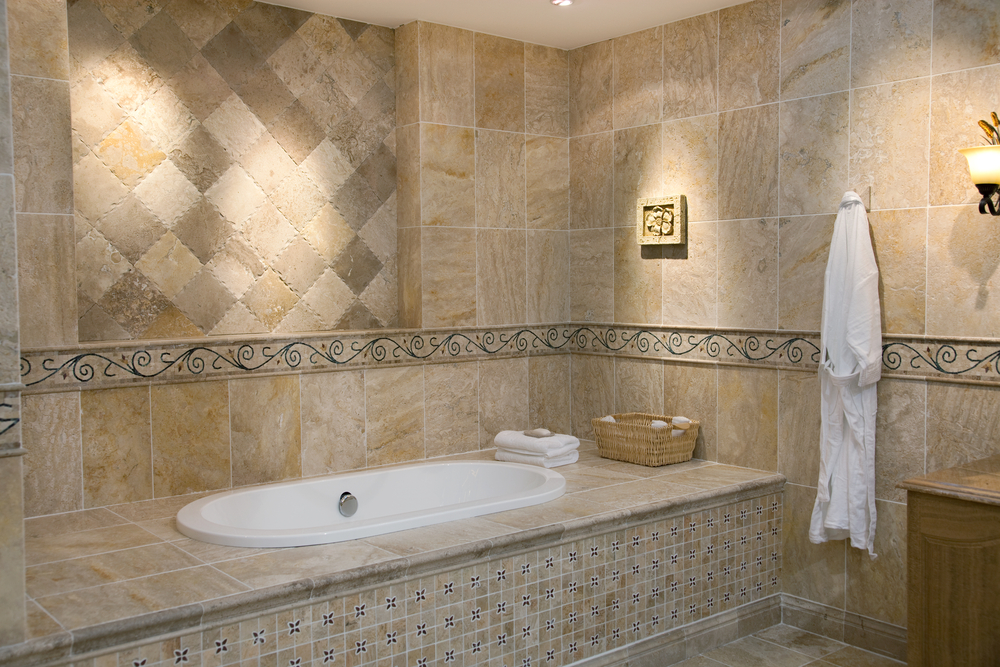Many people believe that the main difference between floor and wall tile is in their size. A lot of people also believe that porcelain tiles are meant for floors and that ceramic tiles are more suitable on walls. Neither of them are true, and the real answer isn’t as straightforward as you may think. The real difference between these two types of tile is about more than just their size and appearance. Innovation in design trends and advances in technology may have “blurred the lines” between these two types of tile (at least, to some extent), so it might be a little confusing if you’re new to decorating.

Here are some of the main differences between floor and wall tiles.
#1: Tile Appearance
Wall tiles will usually be available in more intricate designs and brighter colors, while floor tiles are typically larger and have a simpler design. Both tiles can come in a variety of designs, colors, shapes, and sizes. So, there’s no significant difference between the two except that wall tile is generally not as durable or strong because they are not made to walk on.
Floor tiles are made to be walked on, the emphasis for wall tile is for aesthetics. This design not only makes their installation easier but will also have an effect on your home’s aesthetics.
#2: Strength and Hardness
The Porcelain Enamel Institute (PEI) rating is an important difference between floor and wall tile because it’s a measure of their strength and rigidity. The Porcelain Enamel Institute places tiles into one of five categories — each one with its own measure of how much wear and tear they can endure without cracking or breaking.
The five PEI classes of tiles include the following:
- Class I: Suitable for walls areas with light traffic and walls, because they can get scratched or marked very easily.
- Class II: Can be installed in areas of the home that don’t get a lot of foot traffic.
- Class III: These tiles are ideal for any area of the home.
- Class IV: Suitable for both residential and light commercial settings because they can withstand a great deal of traffic.
- Class V: These types of tiles can be used in high-traffic areas. They are suitable for all residential and heavy commercial traffic such as airports and malls.
Floor tiles will have a higher PEI rating than wall tiles. Be sure to speak to a professional for more information.
#3: Durability and Maintenance
Wall tiles are stylistically thinner than floor tiles, so they’re more likely to crack under pressure. Floor tiles, on the other hand, will be thicker and stronger because they need to handle the stress of constant foot traffic. But even though wall tiles aren’t always as thick as their counterparts, they can last for decades if you take care of them properly. Both tiles can be used on a wall installation. But, if you’re looking for some new floors, you should go with a set of floor tiles.
#4: Heat and Moisture Resistance
The manufacturing process determines heat and moisture resistance. Porcelain tiles are created with higher heat, which gives them greater moisture resistance. Wall tiles will not be subject to as much heat and moisture as floor tiles, and therefore do not need to be as water resistant.
#5: Lifespan
Both wall and floor tiles have a similar lifespan and should last for many years if they’re properly maintained. Floor tiles, however, are stronger and more durable than wall tiles. So, they should last longer — at least, in theory. But, if they’re properly maintained, wall tiles can last just as long. They do, however, have a disadvantage because they’re often made of lighter and softer materials.
If you’re looking for one of the best tile stores in Corpus Christi to help you to find the perfect wall or floor tile, be sure to get in touch with Tile Source of Texas.


 (361) 853-5600
(361) 853-5600